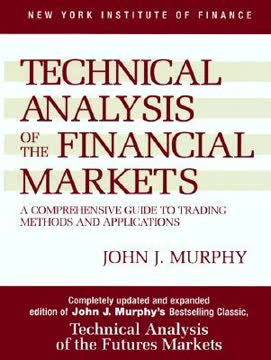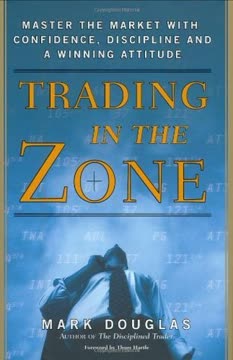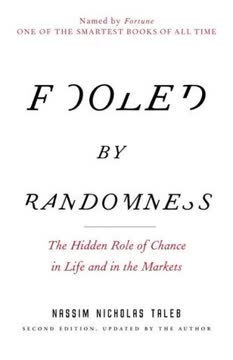نکات کلیدی
1. بازارها بسیار تصادفی هستند، اما لبههای کوچکی برای معاملهگران ماهر وجود دارد
هر لبهای که ما به عنوان معاملهگران تکنیکال داریم، از عدم تعادل فشار خرید و فروش ناشی میشود.
بازارها سیستمهای پیچیدهای هستند که اغلب به نظر میرسند تصادفی باشند و کسب سود مداوم را چالشبرانگیز میکنند. با این حال، معاملهگران ماهر میتوانند با شناسایی عدم تعادل در فشار خرید و فروش، لبههای آماری جزئی را تشخیص دهند. این لبهها به صورت الگوهایی در حرکت قیمت و ساختار بازار ظاهر میشوند.
مفاهیم کلیدی برای یافتن لبهها:
- تمرکز بر روی تنظیمات با احتمال بالا یا نسبتهای پاداش/ریسک عالی
- درک اینکه لبهها فقط در اندازههای نمونه بزرگ معتبر هستند
- تشخیص اینکه بیشتر حرکات قیمت مشاهده شده تصادفی هستند
- توسعه مهارتها برای شناسایی شرایط بازار کمتر تصادفی
چالشهای معاملهگری: تصمیمگیریهای پرخطر تحت فشار با اطلاعات ناکافی. معاملهگران باید یاد بگیرند که در این محیط نامطمئن تصمیمگیری کنند و در عین حال روانشناسی و ریسک خود را مدیریت کنند.
2. حرکت قیمت بازتاب تعامل نیروهای محرک و مقاومتی است
حرکت قیمت اصطلاحی است که برای توصیف حرکات بازار در حالت پویا استفاده میشود. حرکت قیمت ساختار بازار را ایجاد میکند که رکورد ایستای چگونگی حرکت قیمتها در گذشته است.
درک حرکت قیمت برای معاملهگران تکنیکال حیاتی است. این نمایانگر تعامل پویا بین فشار خرید و فروش است که ساختار بازار قابل مشاهده را ایجاد میکند. حرکت قیمت میتواند به عنوان نتیجه دو نیروی مخالف در نظر گرفته شود: نیروی محرک که سعی در حرکت قیمت دارد و نیروی مقاومتی که با آن حرکت مخالفت میکند.
عناصر کلیدی حرکت قیمت:
- حرکات ضربهای (حرکت قوی جهتدار)
- تثبیتها و بازگشتها
- سطوح حمایت و مقاومت
- ساختار روند (قلهها و درههای بالاتر در روندهای صعودی، قلهها و درههای پایینتر در روندهای نزولی)
معاملهگران باید بر شناسایی نقاطی تمرکز کنند که در آن حرکت قیمت کمتر تصادفی میشود و احتمالاً فرصتهای قابل معاملهای ارائه میدهد. این نیاز به درک عمیق از چگونگی حرکت و واکنش بازارها به شرایط مختلف دارد.
3. چرخه بازار وایکوف چارچوبی برای درک رفتار بازار ارائه میدهد
وایکوف یک چرخه چهار مرحلهای بازار را پیشنهاد کرد. ایده او این بود که چرخه ناشی از اقدامات این بازیگران بزرگ است که عملیات خود را در بازار برنامهریزی میکنند تا از واکنشهای نامناسب عموم مردم به حرکت قیمت بهرهبرداری کنند.
چرخه وایکوف مدلی برای درک رفتار بازار از طریق چهار مرحله ارائه میدهد: انباشت، افزایش قیمت، توزیع و کاهش قیمت. این چارچوب به معاملهگران کمک میکند تا فرصتها و ریسکهای بالقوه را در مراحل مختلف توسعه بازار شناسایی کنند.
مراحل چرخه وایکوف:
- انباشت: محدوده جانبی، بازیگران بزرگ به آرامی خرید میکنند
- افزایش قیمت: روند صعودی، عموم مردم آگاه میشوند و مشارکت میکنند
- توزیع: محدوده جانبی، بازیگران بزرگ به عموم مردم میفروشند
- کاهش قیمت: روند نزولی، عموم مردم متوجه تغییر روند میشوند
درک این چرخه میتواند به معاملهگران کمک کند تا استراتژیهای خود را با اقدامات بازیگران بزرگ و مطلع بازار هماهنگ کنند. با این حال، مهم است که تشخیص دهیم که بازارهای واقعی اغلب پیچیدهتر و کمتر تعریف شده از این مدل ایدهآل هستند.
4. معاملهگران تکنیکال باید بر چهار تنظیمات اصلی معامله تمرکز کنند
هر معامله تکنیکالی که قابل تصور است در یکی از این دستهها قرار میگیرد.
چهار تنظیمات اصلی معامله پایه و اساس استراتژیهای معاملهگری تکنیکال را تشکیل میدهند. درک و تسلط بر این تنظیمات به معاملهگران اجازه میدهد تا با شرایط و فرصتهای مختلف بازار سازگار شوند.
چهار تنظیمات معامله:
- ادامه روند: ورود در جهت یک روند تثبیت شده
- پایان روند: ورود بر خلاف یک روند، با پیشبینی پایان آن
- نگهداشتن حمایت/مقاومت: معامله بازگشتها از سطوح کلیدی
- شکست حمایت/مقاومت: معامله شکستها از سطوح کلیدی
هر تنظیم ویژگیها، احتمالات و پروفایلهای ریسک/پاداش منحصر به فردی دارد. معاملهگران موفق اغلب در یک یا دو تنظیم که با شخصیت و تحمل ریسک آنها همخوانی دارد تخصص دارند، اما درک همه چهار تنظیم یک جعبه ابزار جامع برای پیمایش در محیطهای مختلف بازار فراهم میکند.
5. میانگینهای متحرک و شاخصها میتوانند در صورت درک صحیح، زمینه ارزشمندی ارائه دهند
در شهود جادویی وجود ندارد. بلکه این یک مهارت حل مسئله عادی است که در سطحی خارج از آگاهی عمل میکند.
شاخصهای تکنیکال مانند میانگینهای متحرک و MACD میتوانند در صورت استفاده صحیح، بینشهای ارزشمندی ارائه دهند. با این حال، درک ساختار، محدودیتها و نحوه واکنش آنها به شرایط مختلف بازار بسیار مهم است.
نکات کلیدی برای استفاده مؤثر از شاخصها:
- درک ساختار ریاضی هر شاخص
- تشخیص نحوه واکنش شاخصها به الگوهای مختلف قیمت
- استفاده از شاخصها برای تأیید یا ارائه زمینه، نه به عنوان تصمیمگیرندگان اصلی
- اجتناب از پیچیده کردن بیش از حد نمودارها با شاخصهای زیاد
شاخصها باید به عنوان ابزارهایی برای برجسته کردن و تأکید بر عناصر مهم ساختار بازار دیده شوند، نه به عنوان پیشبینیکنندگان جادویی حرکت قیمت آینده. توسعه درک عمیق از چند شاخص به دقت انتخاب شده اغلب ارزشمندتر از استفاده سطحی از شاخصهای متعدد است.
6. تعصبات روانشناختی و احساسات به طور قابل توجهی بر عملکرد معاملهگری تأثیر میگذارند
بازار اساساً طراحی شده است تا معاملهگران را وادار کند که کار اشتباه را در زمان اشتباه انجام دهند. اینطور نیست که بازار علیه ما باشد؛ بلکه بازار ما را علیه خودمان قرار میدهد.
چالشهای روانشناختی مانع بزرگی برای بسیاری از معاملهگران هستند. محیط بازار اغلب تعصبات شناختی و واکنشهای احساسی را تشدید میکند و منجر به تصمیمگیری ضعیف میشود.
دامهای روانشناختی رایج:
- تعصب به اعتماد به نفس بیش از حد
- تعصب تأیید
- مغالطه قمارباز
- اجتناب از ضرر
- توهم کنترل
معاملهگران موفق استراتژیهایی برای مدیریت احساسات خود و مقابله با این تعصبات توسعه میدهند. این ممکن است شامل قوانین مدیریت ریسک سختگیرانه، برنامههای معاملاتی از پیش تعریف شده و بازتاب منظم خود باشد. تشخیص اینکه این تعصبات وجود دارند و به طور فعال برای کاهش تأثیر آنها کار کردن، برای موفقیت بلندمدت در معاملهگری حیاتی است.
7. توسعه شهود و دستیابی به حالت جریان برای معاملهگری سطح بالا حیاتی است
شهود واقعی است، اما خاص نیست. هر کسی که با بازار تعامل دارد به سرعت درجهای از شهود را توسعه میدهد، بنابراین حضور شهود یک لبه معاملاتی نیست.
پرورش شهود جنبه مهمی از تبدیل شدن به یک معاملهگر ماهر است. با این حال، شهود باید بر اساس اصول صحیح و تجربه گسترده باشد. حالت جریان، که با جذب کامل در کار و عملکرد بیزحمت مشخص میشود، اغلب با عملکرد اوج در معاملهگری همراه است.
توسعه شهود معاملاتی:
- کسب مواجهه مکرر با دادههای بازار به طور مداوم ساختار یافته
- نزدیک شدن به کار با نگرش باز و پذیرنده
- تعادل شهود با تحلیل منطقی و مدیریت ریسک
- تشخیص اینکه شهود میتواند خطا داشته باشد و نیاز به پالایش مداوم دارد
دستیابی به جریان در معاملهگری نیاز به اهداف واضح، بازخورد فوری و اعتماد به مهارتهای خود دارد. ایجاد محیطی که به جریان کمک کند میتواند به طور قابل توجهی عملکرد و تصمیمگیری معاملاتی را بهبود بخشد.
8. ثبات و مدیریت ریسک مناسب برای موفقیت بلندمدت ضروری هستند
معاملهگری خوب تا حد زیادی کسلکننده و قابل پیشبینی است.
ثبات در رویکرد برای موفقیت بلندمدت در معاملهگری حیاتی است. این امر به اجرای معامله، مدیریت ریسک، نگهداری سوابق و تحلیل نتایج اعمال میشود. معاملهگران موفق اغلب روالها و فرآیندهایی را توسعه میدهند که به دقت دنبال میکنند.
عناصر کلیدی معاملهگری پایدار:
- قوانین معاملاتی و پارامترهای ریسک به وضوح تعریف شده
- بررسی و تحلیل منظم نتایج معاملاتی
- یادگیری مداوم و پالایش مهارتها
- انضباط احساسی و پایبندی به برنامه معاملاتی
مدیریت ریسک مناسب برای بقا در بازارها اساسی است. این شامل تعیین اندازههای موقعیت مناسب، استفاده از توقف ضرر و مدیریت ریسک کلی پرتفوی است. معاملهگران باید به یاد داشته باشند که حفظ سرمایه حیاتی است، زیرا به آنها اجازه میدهد به معامله ادامه دهند و از فرصتهای آینده بهرهبرداری کنند.
آخرین بهروزرسانی::
FAQ
What's "The Art and Science of Technical Analysis" about?
- Comprehensive Guide: The book by Adam H. Grimes is a comprehensive guide to understanding market structure, price action, and trading strategies.
- Focus on Technical Analysis: It emphasizes the importance of technical analysis in trading, providing insights into how price movements can be analyzed to predict future market behavior.
- Practical Approach: The book offers a practical approach to trading, combining theoretical knowledge with actionable strategies for traders at all levels.
- Market Psychology: It also delves into the psychological aspects of trading, helping traders understand their own biases and improve their decision-making processes.
Why should I read "The Art and Science of Technical Analysis"?
- Develop a Trading Edge: The book helps traders find and develop a trading edge, which is crucial for long-term success in the markets.
- Understand Market Cycles: It provides a detailed explanation of market cycles, helping traders identify different phases and adapt their strategies accordingly.
- Improve Risk Management: Readers will learn about effective risk management techniques, which are essential for protecting capital and maximizing returns.
- Enhance Psychological Skills: The book addresses the psychological challenges of trading, offering strategies to manage emotions and improve trading discipline.
What are the key takeaways of "The Art and Science of Technical Analysis"?
- Trading Edge: A trading edge is essential for success, and traders must identify moments when markets are less random to capitalize on opportunities.
- Market Structure: Understanding market structure and price action is crucial for identifying trading opportunities and managing risk.
- Psychological Mastery: Traders must master their emotions and cognitive biases to make rational decisions and avoid common pitfalls.
- Continuous Learning: Trading is an ongoing process of learning and adaptation, requiring traders to constantly refine their strategies and skills.
What are the best quotes from "The Art and Science of Technical Analysis" and what do they mean?
- "Trading is hard." This quote emphasizes the competitive and challenging nature of trading, highlighting the need for a verifiable edge and disciplined approach.
- "Markets are extremely competitive." It underscores the importance of understanding market dynamics and being prepared to adapt to changing conditions.
- "You must have an edge." This quote stresses the necessity of having a statistical advantage in trading to achieve consistent profits.
- "Trading is not about being right or predicting the future." It highlights the importance of focusing on probabilities and managing risk rather than trying to predict market movements.
How does Adam H. Grimes define a trading edge in "The Art and Science of Technical Analysis"?
- Positive Expectancy: A trading edge is defined as having a positive expectancy, where the sum of profits from winning trades exceeds the sum of losses from losing trades over time.
- Statistical Advantage: It involves identifying moments when markets are less random and placing trades aligned with slight statistical edges.
- Avoid Random Markets: Traders should avoid market environments that are highly random, as consistent profits are not possible in such conditions.
- Develop and Refine: Developing and refining a trading edge is an ongoing process that requires continuous monitoring and adaptation.
What is the Wyckoff market cycle as explained in "The Art and Science of Technical Analysis"?
- Four Phases: The Wyckoff market cycle consists of four phases: accumulation, markup, distribution, and markdown.
- Accumulation Phase: Large players buy without moving the market, creating a base for future uptrends.
- Markup Phase: The market trends upward as the public becomes aware of the price movement, often driven by smart money.
- Distribution and Markdown: In distribution, smart money sells to the public, leading to a downtrend or markdown as the market corrects.
How does "The Art and Science of Technical Analysis" address the psychological challenges of trading?
- Cognitive Biases: The book discusses common cognitive biases, such as overconfidence and confirmation bias, that can affect trading decisions.
- Emotional Control: It emphasizes the importance of managing emotions like fear and greed to maintain discipline and make rational decisions.
- Intuition and Flow: The book explores the role of intuition and the flow state in trading, helping traders harness these elements for better performance.
- Practical Strategies: Practical strategies are provided to help traders develop the right mindset and overcome psychological barriers.
What are the four technical trades outlined in "The Art and Science of Technical Analysis"?
- Trend Continuation: Trades that align with the current trend, often involving pullbacks or breakouts in the trend direction.
- Trend Termination: Trades that anticipate the end of a trend, focusing on potential reversals or transitions to trading ranges.
- Support/Resistance Holding: Trades that capitalize on price holding at key support or resistance levels, often involving failed breakouts.
- Support/Resistance Breaking: Breakout trades that occur when price moves beyond established support or resistance, signaling potential new trends.
How does "The Art and Science of Technical Analysis" suggest managing risk in trading?
- Position Sizing: The book emphasizes the importance of proper position sizing to manage risk and protect capital.
- Volatility-Based Stops: It recommends using volatility-based stops to account for market fluctuations and avoid premature exits.
- Chandelier Stops: The use of chandelier stops is suggested to lock in profits as trades move in the desired direction.
- Risk/Reward Ratios: Traders are encouraged to focus on trades with favorable risk/reward ratios to maximize potential returns.
What role do indicators play in "The Art and Science of Technical Analysis"?
- Supplementary Tools: Indicators are used as supplementary tools to highlight important elements of market structure and price action.
- Understanding Required: Traders must understand the indicators they use, including how they react to different market conditions.
- Consistency: Consistent use of indicators is important for developing intuition and recognizing patterns in market data.
- Confirmation: Indicators can provide confirmation for trade setups, helping traders make more informed decisions.
How does "The Art and Science of Technical Analysis" approach the concept of market structure?
- Pivot Points: Market structure is defined by pivot highs and lows, which are key elements in understanding price movements.
- Swing Analysis: The book emphasizes the importance of analyzing the length and character of swings to gauge market strength.
- Contextual Patterns: It highlights the need to consider chart patterns in context, as their predictive power depends on the surrounding market environment.
- Dynamic Process: Market structure is a dynamic process that evolves over time, requiring traders to adapt their strategies accordingly.
What is the significance of the "Trader's Mind" section in "The Art and Science of Technical Analysis"?
- Psychological Challenges: This section addresses the unique psychological challenges traders face, such as high-risk decisions and insufficient information.
- Evolutionary Adaptations: It explores how evolutionary adaptations, like pattern recognition and heuristics, can both help and hinder trading.
- Emotional Mastery: The book provides strategies for mastering emotions and cognitive biases to improve trading performance.
- Intuition and Flow: It discusses the development of intuition and the flow state, which are essential for achieving top-level trading performance.
نقد و بررسی
کتاب هنر و علم تحلیل تکنیکال به دلیل رویکرد جامع خود در زمینهی معاملهگری بسیار مورد تحسین قرار گرفته است. خوانندگان از بررسی عمیق پویاییهای بازار، رفتار قیمت و روانشناسی معاملهگری در این کتاب قدردانی میکنند. رویکرد علمی و عملی کتاب، همراه با مثالهای متعدد، به معاملهگران کمک میکند تا مفاهیم پیچیده را درک کرده و استراتژیهای خود را بهبود بخشند. بسیاری این کتاب را برای معاملهگران تکنیکال، بهویژه معاملهگران نوسانی، ضروری میدانند. در حالی که برخی آن را پیچیده مییابند، اکثر موافقند که ارزش تلاش را دارد. منتقدان به طور مداوم بر ارزش آن در توسعهی درک عمیقتر از تحلیل تکنیکال و ساختار بازار تأکید میکنند.
Similar Books














